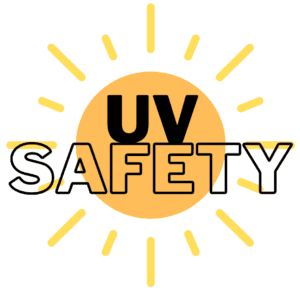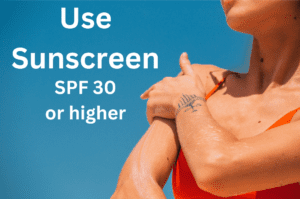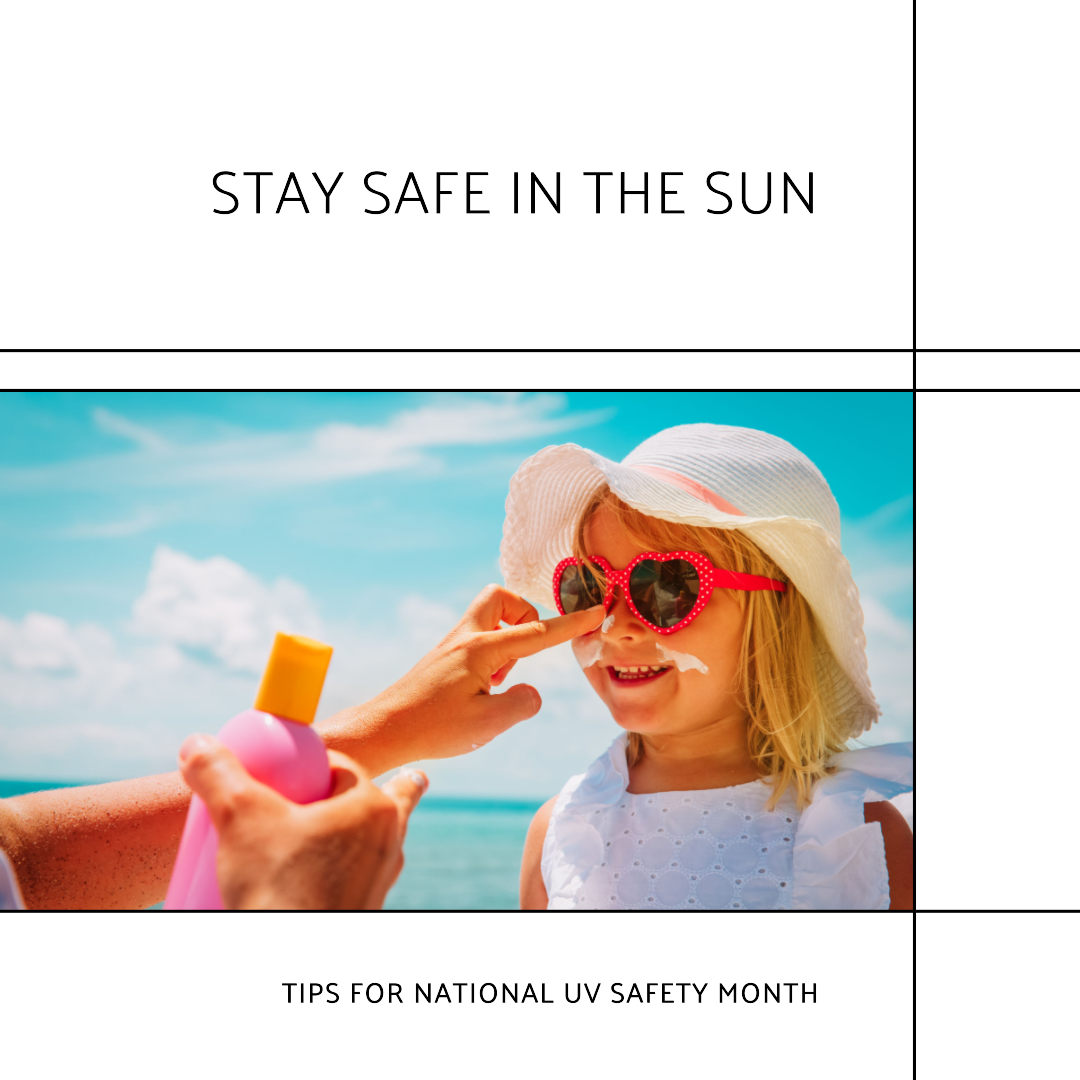
Each July we take the time to try to raise awareness about the danger of Ultraviolet (UV) rays and encourage our patients to take steps to protect their skin and eyes.
Here we will learn what UV radiation is, where it comes from, why UV exposure can be harmful, and how to protect yourself from both UVA and UVB rays.
What is UV Radiation
Ultraviolet Radiation or UV is a form of non-ionizing radiation that is produced by the sun and some artificial sources. While UV can be beneficial in small amounts as it aids in the production of vitamin D it can also cause health risks. Ultraviolet radiation is made up of UVA and UVB rays.
Artificial Sources of UV
You can be exposed to harmful UV rays from sources other than the sun. Some other sources of Ultraviolet light exposure are:
- Tanning Beds
- Some Halogen and fluorescent lights
- Mercury vapor lighting
- Some types of lasers
Risks of Exposure to Ultraviolet Rays
Both UVA and UVB rays can harm your skin and cause cancer. However, UVB rays are stronger and can create more damage. According to the American Cancer Society, skin cancer is the most common form of cancer in the United States. Experts believe that four out of five cases of skin cancer could be prevented, as UV damage is mostly avoidable.
UV Rays & Vitamin D
Vitamin D has many health benefits. Your skin creates vitamin D when exposed to UV rays from the sun. Vitamin D helps your body absorb calcium and phosphorus from food and aids in healthy bone growth. Harvard University research shows that 10 to 15 minutes of sun on your arms and legs a few times a week can generate nearly all the vitamin D our body needs. However, when possible, it is better to get vitamin D from your diet or dietary supplements as they do not increase your risk of skin cancer.
How to Protect Yourself from UV Rays
Taking precautions to reduce sun exposure is important year-round. Here are some tips to protect yourself and your family from UV rays.

- Always use sunscreen, even if it is a cloudy day.
- Choose a broad-spectrum sunscreen (protecting against UVA and UVB radiation.
- Choose a sunscreen that is SPF 30 or higher, and is water-resistant.
- Use a lip balm or lipstick with an SPF of at least 30.
- Apply sunscreen 15-30 minutes before going outside, and remember to re-apply every 2 hours.
- Remember to apply (and re-apply) sunscreen to kids older than 6 months.
- Babies younger than 6 months old should be kept covered and in the shade.
- Discourage teenagers from sunbathing, and remind them to wear sunscreen.
- Avoid indoor tanning beds and sunlamps.
- Be careful at the beach. Sand and water can reflect the damaging rays of the sun increasing your risk of sunburn.
- Be extra cautious if you are taking any medication that may make you more sensitive to the sun such as anti-inflammatories, antibiotics, chemotherapies, antifungals, or blood pressure medications.
- Choose clothes that will protect you from the sun. If possible, wear long pants, a long-sleeved shirt, and a hat with a brim.
- Wear sunglasses that block both UVA and UVB rays.
- Avoid the sun and seek shade, especially between the hours of 10 a.m. and 4 p.m. This is when the sun’s rays are the most intense.
Overexposure to ultraviolet radiation is widely accepted as the underlying cause of harmful effects on the skin, eyes, and immune system. UV exposure is the root cause of most skin cancers. The more you know about UV safety, the better you can protect yourself and your family.
If you are concerned about skin cancer or other health issues stemming from over exposure to UV radiation, talk to your family doctor at River Bend Medical Associates. As part of your medical team, we are here to provide you with the best care in all aspects of your healthcare needs. For more information on our medical practice, or to make an appointment contact River Bend Medical Associates, or call 916-392-4000.


